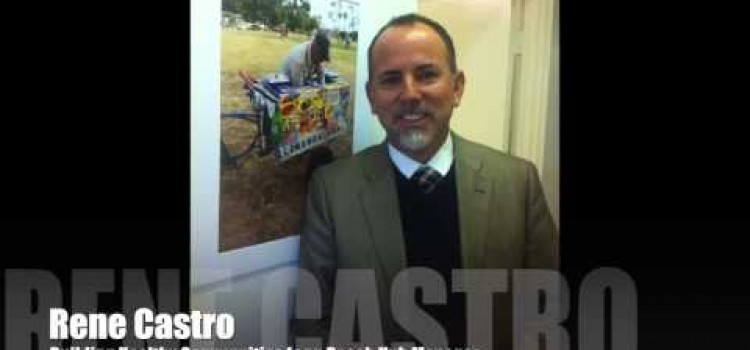

Over the years, Long Beach has gained somewhat of a reputation as a violent city.
Just last year, Long Beach was named by the Centers for Disease Control as one of the top five cities in the nation with gang violence. Today, Long Beach residents are 50 percent more likely to become the victim of a crime than the state average.
Violence is not a secret in some parts of this city. While many media outlets have highlighted the violent ‘hotspots’ in Long Beach where shootings and murders happen more often, what doesn’t often get talked about is what causes the violence?
VoiceWaves caught up with Building Healthy Communities (BHC) Co-Hub Manager Rene Castro to help begin to chip away at the idea of violence, in the hopes that by identifying and naming its factors, they can be fully addressed. Castro has a long history of promoting peace in the city through his work as the vice president of programs at the California Conference for Equality & Justice and now, with BHC.
Funded by the California Endowment, BHC Long Beach is tasked to “expand access to affordable, quality health care for underserved individuals and communities, and to promote fundamental improvements in the health status of all [in Long Beach].” BHC currently works with a network of 80 organizations in the city.
“People tend to think of violence as an interpersonal problem, but the most salient causes of violence exist at the community level,” Castro said. “If you were marginalized and disenfranchised for decades, you’d be violent too.”
The following is a question and answer session between Voicewaves (V) and Castro (C).
(V): Define violence.
(C ): We often think about the physicality of violence, but sometimes the conversation get’s stuck there. If you think about the impact of other forms of violence, marginalizing an entire community affects more people and is deeper felt.
If you think about the Jim Crow laws. That was a whole system of trying to keep one particular group of people down. The laws themselves were not violent… but they enclosed violent structures of oppression over a group of people.
There are communities and young men of color killing each other in Long Beach, and these problems don’t start at the school with those youth, they started 30 or forty years ago with these structures of violence.
(V): What are some historical examples of ‘structures of violence’?
(C ): Well, if you were an African American in Long Beach you couldn’t buy a house east of Alamitos explicitly until the 1960s.
In 1963 The Rumford Fair Housing Act only formally eliminated most forms of discrimination in housing nationally. The Fair Housing Foundation was founded the following year in Long Beach due to cases of discriminatory housing.
According to the foundation’s Executive Director Barbara Shull, there were actually more cases of discrimination in 1990 than in 1964 because people become more aware of discrimination as time goes on and seek help more effectively.
Lack of access to education is another form of violence. In Long Beach there are achievement gaps for African American, Latino, and Cambodian and Pacific Islander students. These students aren’t less intelligent than their peers, so if they’re not doing well it’s because there’s a structural reason.
(V): What do you think of Long Beach’s participation in ‘A Season For Nonviolence’ and other peace-focused campaigns?
(C ): I think peace is important but I think the idea of peace also get’s corrupted as something that occurs on an individual level.
People think of it as communicating and getting along with each other, but really it involves a commitment to non-violence, as well as social change. The problem of violence is not really at the individual or interpersonal level, it’s at the structural level.
(V): What are some factors of violence in the community?
(C ): It’s important for us to look at the social norms and laws that are supporting the condition of violence in our communities.
The Sandy Hook massacre was a terrible loss to people in this country, but it called our attention to a root policy that encourages violence and that is the ease of access to weapons.
The factors of violence for Long Beach students are access to weapons, the drug trade, and community norms that do not support connection. Right now it’s not cool to participate in civic engagement or to be successful academically. Official policies as well as unwritten neighborhood norms present an egregious form of violence.
(V): How can we we begin to address violence?
(C ): Effective democratic engagement is important. You must make people feel that their views are important, and even necessary for those institutions to function. People that are engaged feel a sense of meaning and connection to their community. When people don’t feel engaged and they feel those institutions are not there to represent them, they get violent.
Often times this leads to a further institutional response of “Oh this community is violent.” I think that if you had been being marginalized and not heard for decades, you’d be frustrated too.
We need holistic solutions to these problems.
(V): Why is important to include the idea of institutional violence in the larger conversation?
(C ): Looking at advocates of social change as ‘victims’ of violence is a way of narrowing the conversation to a construct that’s palatable to people. It makes it so leaders can’t be held accountable for greater systems of oppression
In other words, it’s easy to get our head around personal violence. It takes more soul searching, data, and evidence for us to take a look at broader more structural forms of violence.
To learn more about BHC and find out about how to get involved you can visit the website for The California Endowment or here: The Long Beach Gang Reduction, Intervention and Prevention Project or GRIP.
